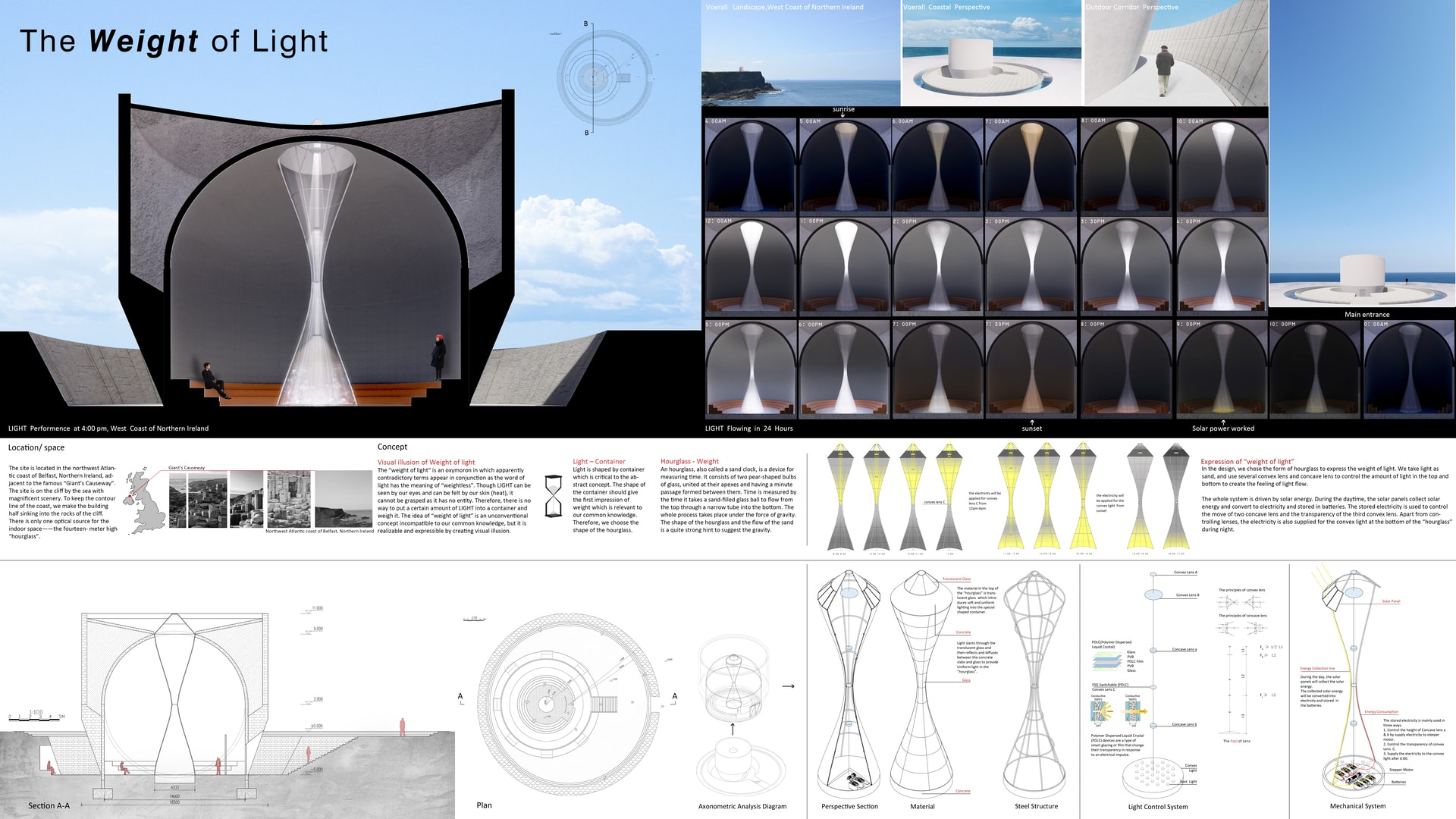Project Description
Concept The concept of the “weight of light” is an oxymoron in which apparently contradictory terms appear in conjunction as the word of light has the meaning of “weightless”. Though light can be seen by eyes and can be felt by skin (heat), it cannot be grasped as it has no entity. Therefore, there is no way to put a certain amount of LIGHT into a container and weigh it. The idea of “weight of light” is an unconventional concept incompatible to our common knowledge, but it is realizable and expressible by creating visual illusion through some design tricks. Location/ space The site is located in the northwest Atlantic coast of Belfast, Northern Ireland, adjacent to the famous “Giant’s Causeway”. The site is on the cliff by the sea with magnificent scenery. To keep the contour line of the coast, we make the building half sinking into the rocks of the cliff. There is only one optical source for the indoor space——the fourteen- meter high “hourglass”. Way to express the weight of light In order to express the weight concept of light, it is vital to give a shape to light whose first impression reminds people of weight. An hourglass, also called a sand clock, is a device for measuring time. It consists of two pear-shaped bulbs of glass, united at their apexes and having a minute passage formed between them. Time is measured by the time it takes a sand-filled glass ball to flow from the top through a narrow tube into the bottom. The whole process takes place under the force of gravity. The shape of the hourglass and the flow of the sand is a quite strong hint to suggest the gravity. In the design, we chose the form of hourglass to express the weight of light. We take light as sand, and use several convex lens and concave lens to control the amount of light in the top and bottom to create the feeling of light flow. The whole system is driven by solar energy. During the daytime, the solar panels collect solar energy and convert to electricity and stored in batteries. The stored electricity is used to control the move of two concave lens and the transparency of the third convex lens. Apart from controlling lenses, the electricity is also supplied for the convex light at the bottom of the “hourglass” during night.
